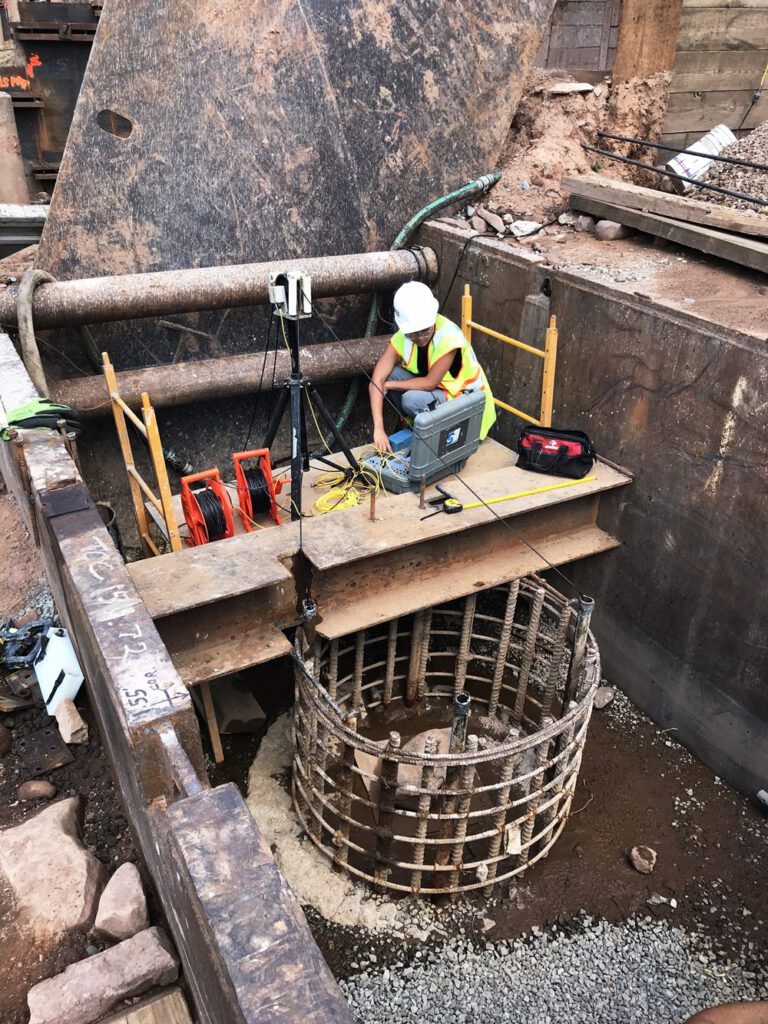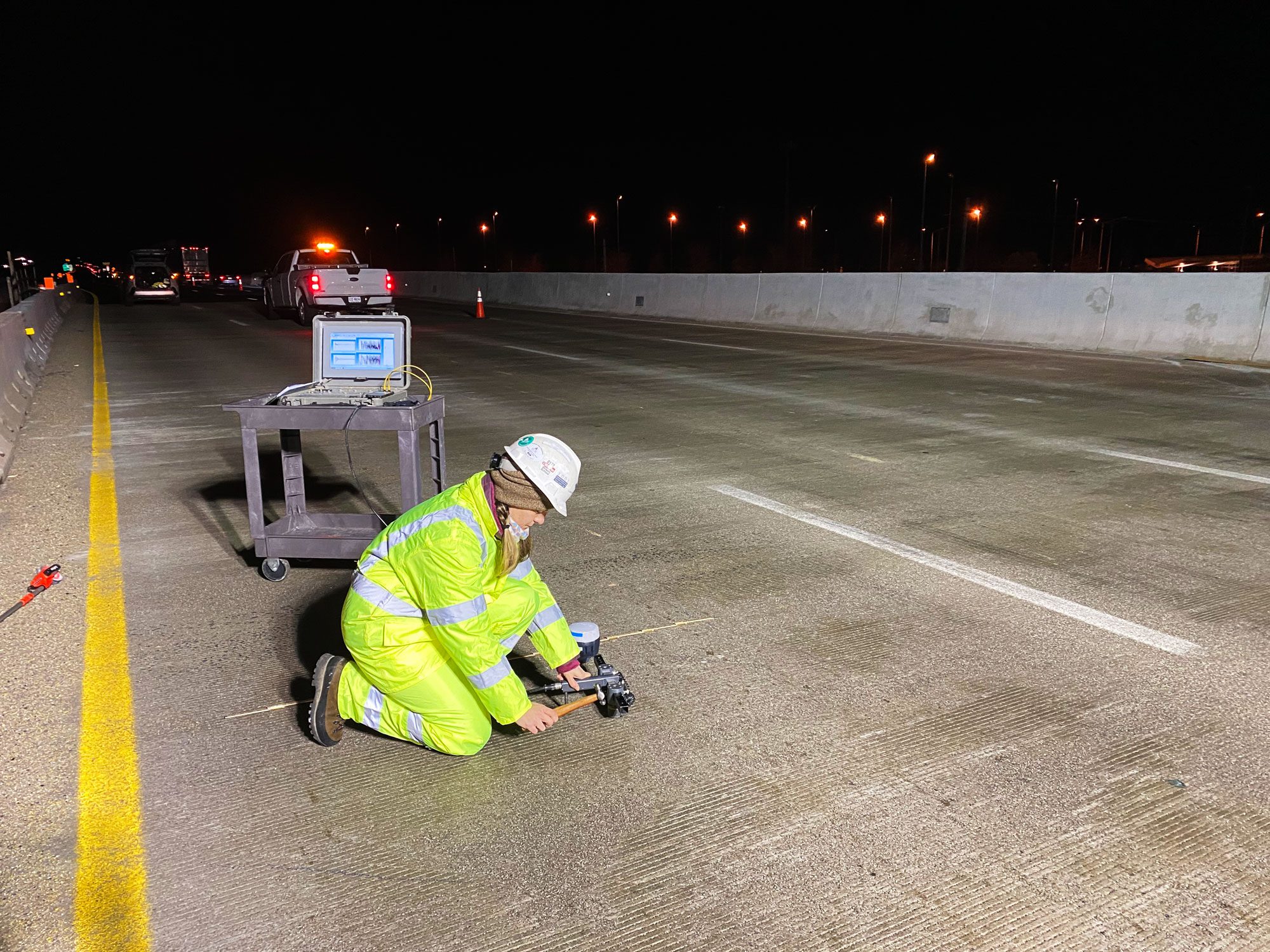Nondestructive Testing and Evaluation
Olson’s professional engineers have the knowledge, equipment and field experience to help on any project.
Condition assessment projects are performed on new structures for quality assurance purposes and older structures for repair, rehabilitation and/or renovation purposes. Owners may want to change the use of an older building such that its load rating needs to be upgraded, add on to a building and/or assess its internal condition to identify areas in need of repair. Design plans and construction records are often not available for older structures. Such basic information as the material strengths, structural element dimensions, and internal concrete/masonry reinforcing details may not be known or apparent. Corrosion of metal elements, decay of wood, and cracking of concrete and masonry due to environmental factors such as freezing, freeze-thaw, moisture and chemical intrusion, and other aging effects all reduce the strength, safety and durability of construction materials over time.
Many conditions are apparent on exposed surfaces of buildings and Olson Engineering provides visual external condition assessment services during both preliminary and detailed internal condition assessment investigations, and uses destructive correlation testing routinely in its projects. However, internal conditions of structural members, building facades, and foundations are not able to be assessed visually and destructive coring of structures checks only a small portion of the structure and causes damage. Fortunately, NDT methods have advanced to the point where internal conditions of structures can be reliably determined, and accurately predicted by correlating with destructive core strength results. For new and old buildings, NDT-based internal condition assessment investigations can quickly uncover hidden construction defects, and determine the extent of damage from such catastrophic events as earthquakes, fire, tornadoes, hurricanes, and lightning.
Olson Engineering has evaluated the conditions of many different types of structures and infrastructure from the ground up. We continually improve and expand our NDT capabilities from initial work on concrete to stone, masonry, asphalt, wood and steel materials. NDT methods can test on a variety of surfaces and structures: structural beams, columns, walks, and floors; slabs and pavements; footings, driven piles and drilled shafts; tunnels, conduits and pipeline; and dams and spillways.


